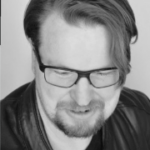The Future
of Data
Security is
The Future of
Data Security is Nanophotonics
Nanophotonics
Mitigate the ever-growing security risks by protecting your organization’s data storage through the fusion of robust digital encryption and unique optical hardware.
Coming soon: OPē1. Our encrypted cloud storage device.
What World-Leading Experts Say
Industry leaders weigh in on our cutting-edge technology




Scientific partners
Our stellar scientific partners for nanophotonics hardware. We have been working with some of the most respected nanophotonics scientists in the world.
THREE LAYERS OF UNCOMPROMISING SECURITY
OPē1 is an encrypted cloud storage device that offers the next level of data security, protecting against current and future threats through three layers of encryption.
Layer 1
Digital Unclonability
At the core of OPē1 is our Digitally Unclonable Optical Data Scrambler (DUODS). Its unique feature of digital unclonability ensures that hackers cannot decrypt data without access to a matching DUODS device.
Layer 2
Post-Quantum Cryptography
To protect against the imminent quantum computer threat, OPē1 offers a layer of Post- Quantum Cryptography (PQC).
Layer 3
Conservative Encryption
On top of the other two layers, OPē1 comes with a robust layer of FIPS-conform digital cryptography, providing a foundational encryption baseline and simplifying compliance.
BUSINESS AND TECHNOLOGY PARTNERS
Empowering our vision with innovation partners




About OPē Technologies
A Novel Approach to Data Security
Resources
Research
We’ve been researching and building next-generation tools since 2013. Learn more about what’s gone in to our discoveries and view our patents.
Blog
Lorem ipsum dolor sit amet, consectetur adipiscing elit. Ut elit tellus, luctus nec ullamcorper mattis,
Definitions
Lorem ipsum dolor sit amet, consectetur adipiscing elit. Ut elit tellus, luctus nec ullamcorper mattis, pulvinar dapibus leo.
